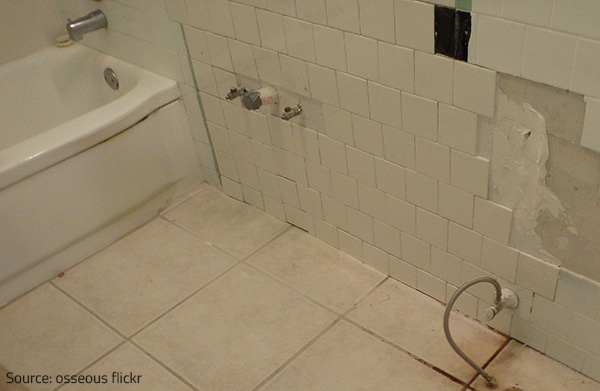How to avoid a Water Damaged Bathroom
How to avoid a Water Damaged Bathroom
Blog Article
This article in the next paragraphs pertaining to How to Prevent Bathroom Water Damage is seriously insightful. Read it for your own benefit and figure out what you think about it.

The bathroom is extremely at risk for damp build-up as well as potential water damage due to the constant use water in it. This post provides easy inspection methods to help spotting water damage risks.
The frequent use of water in the bathroom makes it extremely vulnerable for damp build-up as well as potential water damage. By inspecting it regularly, you can reduce water relevant problems.
The adhering to collection of evaluations is easy to perform and also must be done when in every three months in order to keep your washroom healthy as well as to prevent possible water problems triggered by the tub, the shower, pipe joints and also plumbing, sinks, cupboards, as well as the toilet
Do not forget executing these assessments as well as be comprehensive while executing them. Remember that these easy inspections can conserve you a great deal of money by giving very early indicators for water damage
Bath tub as well as Shower
The shower and bath tub require unique interest and upkeep. Inspect the tiles and also replace if cracked. Make certain that there is no missing cement in between the tiles. Evaluate as well as change split caulking at joints where the walls satisfy the floor or the bath tub. Blocked drains pipes as well as pipelines issues will stop the bathtub from drying out and also may show major troubles underneath the bathtub. Talk to a professional promptly to stop structural damages. Take note of stainings or soft locations around the bathtub wall surfaces as they may show an interior leakage.
Plumbing
Signs for water damages are hard to find because most pipelines are installed inside the wall surfaces.
Pay special interest to floor covering and wall surfaces moisture as well as stains as they might indicate an unseen plumbing problem. Examine moisture degrees in adjoining areas as well.
Sinks as well as Cabinets
Sinks and cupboards are revealed to moisture and also humidity day-to-day and also are often ignored. Evaluate routinely under the sink and also on the countertop above it. Fix any kind of drip in the trap as it may recommend drainpipe problems. Browse the sink, slow-moving draining pipes may suggest an obstructed drainpipe. Replace sink seals if they are broken or loosened.
The Commode
The commode is a vulnerable water junction. Inspect the water lines as well as look for leakages around the toilet seat, in the hose pipe, as well as under the water storage tank. If you identify any signs of wetness on the flooring around the bathroom, look for leakages in the toilet rim and tank seals.
Understand that hanging bathroom dish antiperspirants raises the opportunities for clogs.
TIPS TO PREVENT WATER DAMAGE IN THE BATHROOM
The average household uses approximately 80-100 gallons of water per person per day. For a family of 4, that's almost 2,500 gallons of water a week! The largest portion of this consumption comes from bathroom use. Flushing the toilet uses the most water, followed by taking a shower or bath. With that much water running through the home, water damage in the bathroom is bound to happen. Knowing how to spot signs of a water leak is essential to preventing long-term damage. This guide provides you with tips to reduce the impact of water damage on your bathroom.
CAUSES OF BATHROOM WATER DAMAGE
Pipe breaks are the most common cause of water damage we see in our daily jobs. The age of a pipe plays a large role in a pipe break as well as corrosion. Over time, the metal begins to break down, allowing water to escape. Frozen pipe breaks are also a concern in the winter months. Toilet overflows caused by paper products or children flushing inappropriate items. Degraded caulking around the toilet or bathtub can allow water seepage, sometimes behind the fixture, into the subfloor or walls. Condensation forms when the water in a pipe is cooler than the air temperature. Beads of water form on the exterior of the pipes, sometimes so much so that the water begins to drip and pool below. Sink or shower backups created by poor drainage. HOW TO PREVENT WATER DAMAGE IN YOUR BATHROOM
Inspect your toilet supply line for worn or frayed hoses and replace them as needed. Winterize your plumbing to prevent a frozen pipe break. Use vent fans to prevent condensation that can lead to mold growth. Routinely check and replace degraded caulking around your toilet or bathtub. Increase the temperature in your toilet tank and insulate your pipes during the warm summer months to keep condensation from forming. Use child safety locks on the toilets. Flush only toilet paper. "Flushable" wet wipes are actually not good for your plumbing system. Additionally, feminine hygiene products should not be flushed. Prevent water from escaping the tub or shower. Make sure shower curtains are in good condition. Inspect shower doors and replace the seal strip if necessary. Wipe up any water that accumulates on the floor and use bath mats. Water left to sit can cause damage to the tiles and flooring. Refrain from using bath products containing heavy oils to avoid a clogged drain.

Do you like more info about How to Fix a Water Damage Bathroom? Place a remark down the page. We'd be pleased to listen to your feelings about this article. In hopes that you come back again soon. Are you aware of somebody else who is inquisitive about the topic? Be sure promote it. Thank you for your time spent reading it.
Schedule A Service Call Report this page